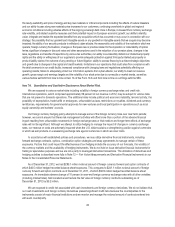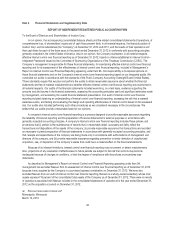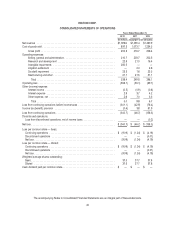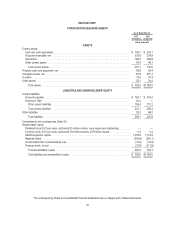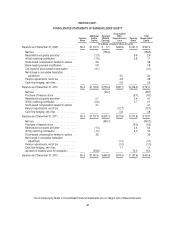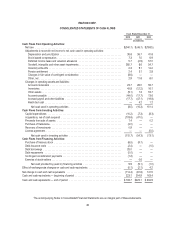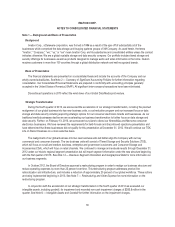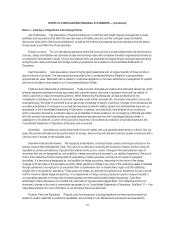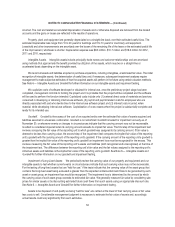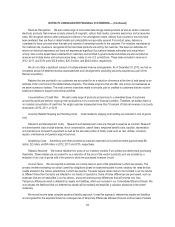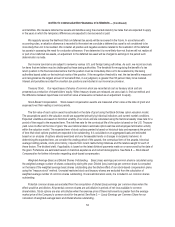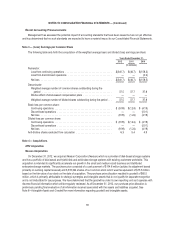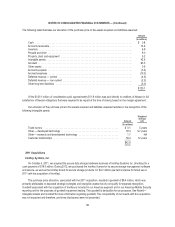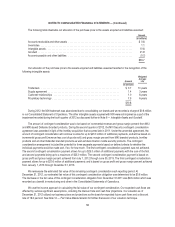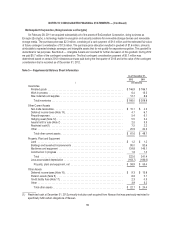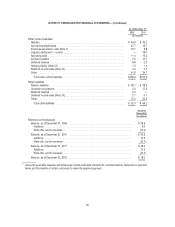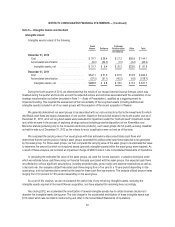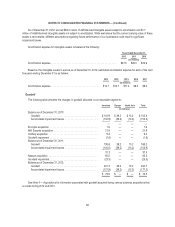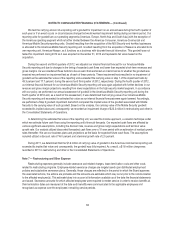Memorex 2012 Annual Report Download - page 56
Download and view the complete annual report
Please find page 56 of the 2012 Memorex annual report below. You can navigate through the pages in the report by either clicking on the pages listed below, or by using the keyword search tool below to find specific information within the annual report.NOTES TO CONSOLIDATED FINANCIAL STATEMENTS — (Continued)
Revenue Recognition. We sell a wide range of removable data storage media products as well as certain consumer
electronic products. Net revenue consists primarily of magnetic, optical, flash media, consumer electronics and accessories
sales. We recognize revenue when persuasive evidence of an arrangement exists, delivery has occurred or services have
been rendered, fees are fixed or determinable and collectability is reasonably assured. For product sales, delivery is
considered to have occurred when the risks and rewards of ownership transfer to the customer. For inventory maintained at
the customer site, revenue is recognized at the time these products are sold by the customer. We base our estimates for
returns on historical experience and have not experienced significant fluctuations between estimated and actual return
activity. Non-income based taxes collected from customers and remitted to governmental authorities are also recorded as
revenue and include levies and various excise taxes, mainly in non-U.S. jurisdictions. These taxes included in revenue in
2012, 2011, and 2010 were $13.8 million, $20.3 million, and $28.3 million, respectively.
We do not utilize a significant amount of multiple-element revenue arrangements. As of December 31, 2012, we had an
immaterial amount of deferred revenue associated with such arrangements (excluding amounts acquired as a part of the
Nexsan acquisition).
Rebates that are provided to our customers are accounted for as a reduction of revenue at the time of sale based on an
estimate of the cost to honor the related rebate programs. The rebate programs that we offer vary across our businesses as
we serve numerous markets. The most common incentives relate to amounts paid or credited to customers that are volume-
based and rebates to support promotional activities.
Concentrations of Credit Risk. We sell a wide range of products and services to a diversified base of customers
around the world and perform ongoing credit evaluations of our customers’ financial condition. Therefore, we believe there is
no material concentration of credit risk. No single customer represented more than 10 percent of total net revenue or accounts
receivable in 2012, 2011, or 2010.
Inventory Related Shipping and Handling Costs. Costs related to shipping and handling are included in cost of goods
sold.
Research and Development Costs. Research and development costs are charged to expense as incurred. Research
and development costs include salaries, stock compensation, payroll taxes, employee benefit costs, supplies, depreciation
and maintenance of research equipment as well as the allocable portion of facility costs such as rent, utilities, insurance,
repairs, maintenance and general support services.
Advertising Costs. Advertising and other promotional costs are expensed as incurred and were approximately $6
million, $2 million and $4 million in 2012, 2011 and 2010, respectively.
Rebates Received. We receive rebates from some of our inventory vendors if we achieve pre-determined purchasing
thresholds. These rebates are accounted for as a reduction of the price of the vendor’s products and are included as a
reduction of our cost of goods sold in the period in which the purchased inventory is sold.
Income Taxes. We are required to estimate our income taxes in each of the jurisdictions in which we operate. This
process involves estimating our actual current tax obligations based on expected taxable income, statutory tax rates and tax
credits allowed in the various jurisdictions in which we operate. Tax laws require certain items to be included in our tax returns
at different times than the items are reflected in our results of operations. Some of these differences are permanent, such as
expenses that are not deductible in our tax returns, and some are temporary differences that will reverse over time.
Temporary differences result in deferred tax assets and liabilities, which are included in our Consolidated Balance Sheets. We
must assess the likelihood that our deferred tax assets will be realized and establish a valuation allowance to the extent
necessary.
We record income taxes using the asset and liability approach. Under this approach, deferred tax assets and liabilities
are recognized for the expected future tax consequences of temporary differences between the book and tax basis of assets
53


